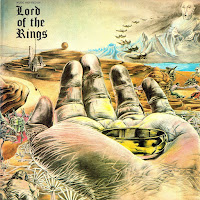The Cousins is een Belgische gitaarband ontstaan eind jaren vijftig die onder meer de single ‘Kili Watch’ uitbracht.
De band startte onder de naam ‘Les jeunes équipes’, maar tijdens een optreden in een Brusselse club wijzigden ze de naam naar The Cousins. In 1960 werd de band ontdekt door platenbaas Jean Kluger.
The Cousins is een de eerste echte Belgische rock 'n roll groep in de stijl van The Shadows.
De groep bestond uit Gus Derse, Adrien Ransy, André Van den Meersschaut, Guido Van den Meersschaut, Jean Huymans en Pol Précaux. Ze kwamen uit Brussel en begonnen als Les Jeune Equipes.
Na een optreden in de Brussel club Les Cousins, veranderde ze hun naam naar The Cousins. De groep scoorde een enorme hit in 1960 met het nummer Killy Watch. Wat meteen de ondergang ook betekende voor de groep. Het nummer verkocht meer dan 1.000.000 exemplaren en er kwamen perikelen over de royalties, waarna Gus Derse de groep verliet en de groep 'The Killy Jacks' oprichtte.
The Cousins kon na de megadebuutsingle Killi Watch nog 5 jaar genieten van het succes.
Vooral live waren ze graag gezien gasten, al konden ze nooit hun succes van weleer herhalen. Toch is het een kunst van zo'n groot nummer te maken.
Ook kregen ze als eerste rock 'n roll groep in België succes in het buitenland.
Tot zelfs in Scandinavië, Zaïre en Argentinië. In 1966 was het verhaaltje uit. 20 jaar later kwamen ze af en toe nog samen voor een eenmalig optreden. http://www.bing.com/translator
Side A
A1. Bouddha
A2. Deep In The Valley
A3. The Robot
A4. Dansevise
A5. Manhattan Spiritual
A6. Pep’s
Side B
B1. Anda
B2. Apache
B3. Madagascar
B4. Tel-Aviv
B5. Swingova
B6. S.O.S.
Credits
Compiled By – Claude Lefrancq
Notes
Release 1966 LP, in the series "Bestseller" - IBC (International Bestseller Company)
A Palette Recording.
Genre: Rock, Pop
Style: Rock & Roll
Length:
Label: Palette
Catalog# PPB 224
Vinyl: Good
Cover: Good
€ 15.00
http://www.ad-vinylrecords.com/product/cousins-the-the-cousins-instrumental-lp/
De band startte onder de naam ‘Les jeunes équipes’, maar tijdens een optreden in een Brusselse club wijzigden ze de naam naar The Cousins. In 1960 werd de band ontdekt door platenbaas Jean Kluger.
The Cousins is een de eerste echte Belgische rock 'n roll groep in de stijl van The Shadows.
De groep bestond uit Gus Derse, Adrien Ransy, André Van den Meersschaut, Guido Van den Meersschaut, Jean Huymans en Pol Précaux. Ze kwamen uit Brussel en begonnen als Les Jeune Equipes.
Na een optreden in de Brussel club Les Cousins, veranderde ze hun naam naar The Cousins. De groep scoorde een enorme hit in 1960 met het nummer Killy Watch. Wat meteen de ondergang ook betekende voor de groep. Het nummer verkocht meer dan 1.000.000 exemplaren en er kwamen perikelen over de royalties, waarna Gus Derse de groep verliet en de groep 'The Killy Jacks' oprichtte.
The Cousins kon na de megadebuutsingle Killi Watch nog 5 jaar genieten van het succes.
Vooral live waren ze graag gezien gasten, al konden ze nooit hun succes van weleer herhalen. Toch is het een kunst van zo'n groot nummer te maken.
Ook kregen ze als eerste rock 'n roll groep in België succes in het buitenland.
Tot zelfs in Scandinavië, Zaïre en Argentinië. In 1966 was het verhaaltje uit. 20 jaar later kwamen ze af en toe nog samen voor een eenmalig optreden. http://www.bing.com/translator
Side A
A1. Bouddha
A2. Deep In The Valley
A3. The Robot
A4. Dansevise
A5. Manhattan Spiritual
A6. Pep’s
Side B
B1. Anda
B2. Apache
B3. Madagascar
B4. Tel-Aviv
B5. Swingova
B6. S.O.S.
Credits
Compiled By – Claude Lefrancq
Notes
Release 1966 LP, in the series "Bestseller" - IBC (International Bestseller Company)
A Palette Recording.
Genre: Rock, Pop
Style: Rock & Roll
Length:
Label: Palette
Catalog# PPB 224
Vinyl: Good
Cover: Good
€ 15.00
http://www.ad-vinylrecords.com/product/cousins-the-the-cousins-instrumental-lp/






















